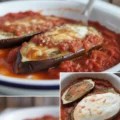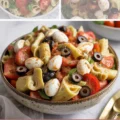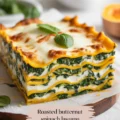I strip pasta down to Pecorino Romano, coarsely cracked black pepper and high quality durum wheat spaghetti, plus starchy pasta cooking water and a pinch of salt. My Pepper Pasta is a study in minimalism that hints at a clever technique and an unexpectedly elegant finish with only three pantry heroes.
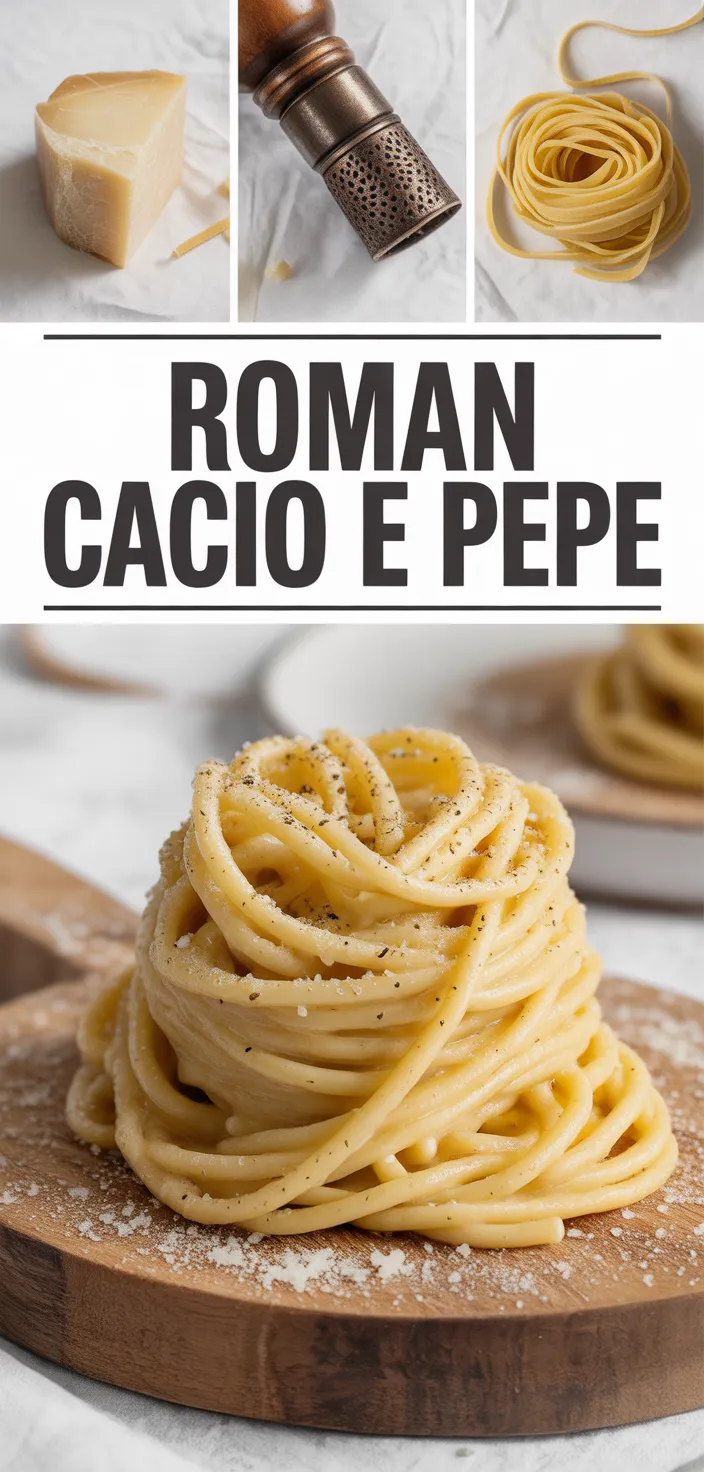
I still remember the first time I nailed cacio e pepe in my tiny kitchen and felt like I got away with something. It’s only three ingredients yet it fights you, 400 g (14 oz) spaghetti or tonnarelli, 120 to 140 g Pecorino Romano finely grated, 2 to 3 tsp freshly cracked black pepper, plus kosher or coarse salt for the pasta water and roughly 350 to 400 ml reserved starchy pasta cooking water.
I keep messing with timing and pepper, sometimes I ruin it, other times it sings — it’s pure Roman simplicity, close to Pepper Pasta or the boldness of Carbone Pasta and other Italian Dishes.
Why I Like this Recipe
– I love that it tastes rich and silky yet never feels heavy.
– I like the bold bite that wakes up every forkful, keeps it interesting.
– I like how it feels fancy so guests think I cooked all day.
– Its quick to pull together on a weeknight, lifesaver when I’m tired.
Ingredients
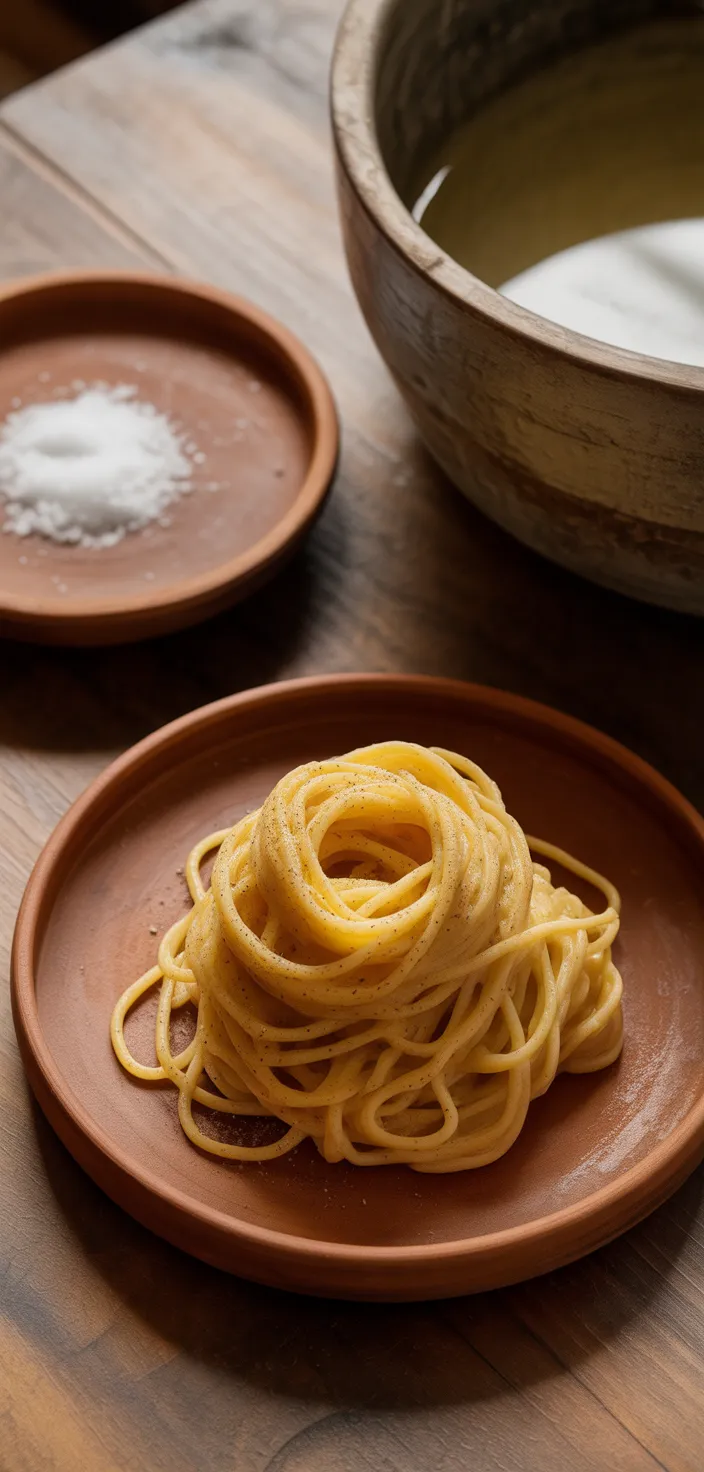
- Spaghetti: Mostly carbs for quick energy, some protein too, low fiber, kinda filling and plain.
- Pecorino Romano: Loaded with protein and calcium, very salty and fatty, intense tang, use it sparingly.
- Black pepper: Coarsely cracked gives heat and aroma, has antioxidants, not sweet or sour, small calories.
- Kosher salt: Salts the water to season pasta, no real nutrition, too much raises blood pressure.
- Starchy pasta water: Rich in starch and salt, makes silky sauce without cream, the secret glue.
Ingredient Quantities
- 400 g (14 oz) spaghetti or tonnarelli, about 4 servings, use a good durum wheat pasta
- 120-140 g (4.2-5 oz) Pecorino Romano, finely grated, packed loosely
- 2 to 3 tsp freshly cracked black pepper, coarsely ground, more to taste
- Kosher or coarse salt for the pasta water, about 1 tbsp per 4 liters of water, adjust as you like
- Roughly 350-400 ml (1 1/2 to 1 2/3 cups) reserved starchy pasta cooking water, kept warm
How to Make this
1. Bring about 4 liters of water to a rolling boil in a big pot, add about 1 tablespoon kosher salt, then drop in 400 g spaghetti or tonnarelli and cook to very al dente, about 1 to 2 minutes less than package directions.
2. While the pasta cooks, finely grate 120 to 140 g Pecorino Romano and loosely pack it into a bowl so it can melt easier, and coarsely crack 2 to 3 teaspoons black pepper.
3. Reserve roughly 350 to 400 ml of the starchy pasta cooking water before you drain the pasta, keep that water warm in a measuring jug or saucepan.
4. In a wide skillet over medium heat toast the cracked black pepper for 30 to 60 seconds until fragrant, shake the pan so it doesnt burn, then add about 50 to 100 ml of the reserved hot pasta water to bloom the pepper and make a peppery broth.
5. Make a cheese slurry: add a few tablespoons of the warm pasta water to the grated Pecorino and stir vigorously to form a smooth, thick paste with no lumps, this makes the sauce creamy later.
6. When the pasta is almost done, transfer it straight from the pot to the skillet with the pepper and broth using tongs or a spider, leave a little water behind in the pot in case you need more.
7. Turn the heat off or very low, add the cheese slurry in small batches to the pasta while tossing or stirring energetically to emulsify the cheese with the starchy water into a glossy sauce; add more reserved water a little at a time until you get a silky coating. Be careful not to overheat or the cheese will clump.
8. Taste and adjust: add more grated Pecorino for richness or more cracked pepper for bite, but remember Pecorino is salty so dont add extra salt.
9. Serve immediately while hot, finish with one more crack of black pepper on top. Eat fast, because this sauce is best right away.
10. Quick tips: use a wide pan for easier tossing, finely grate the cheese for smoother melting, keep the reserved water warm, and if the sauce goes grainy add a splash more hot pasta water and toss furiously until it comes back together.
Equipment Needed
1. Large pot (4 L) for boiling the pasta
2. Wide skillet for toasting pepper and tossing the pasta
3. Tongs or a spider strainer to transfer the pasta straight to the pan
4. Measuring jug or heatproof pitcher to hold the reserved hot pasta water
5. Fine box grater or microplane for the Pecorino
6. Mixing bowl to loosely pack the grated cheese and make the slurry
7. Colander to drain pasta if you’re not using a spider
8. Wooden spoon or whisk for vigorous stirring and emulsifying the sauce
FAQ
How To Make An Authentic Cacio E Pepe Like A Roman Recipe Substitutions and Variations
- Pasta (spaghetti or tonnarelli): swap for bucatini, linguine, or fresh egg tagliatelle. Bucatini traps the sauce in its hole and feels more rustic, fresh egg pasta cooks faster so hold back more of your cooking water.
- Pecorino Romano (120-140 g): use Parmigiano-Reggiano or a 50/50 Pecorino and Parmesan mix for a milder, nuttier result, or any good aged sheep milk cheese if Romano isnt available. Grate it very fine so it melts smoothly.
- Black pepper (2 to 3 tsp freshly cracked): try freshly ground white pepper for heat without the black flecks, or Tellicherry/Corinth pepper for a fruitier, more complex kick; you can also lightly toast whole peppercorns then crack them for extra aroma.
- Reserved starchy pasta water (350-400 ml): if you dont have enough, use warm low sodium chicken or vegetable broth and whisk in about 1 tsp cornstarch or potato starch dissolved in a little warm water to mimic the body, or save water from another pasta batch; keep whatever liquid warm when you add it so the cheese emulsifies.
Pro Tips
1) Grate the Pecorino super fine and stick it in the freezer for 10 minutes before grating if it feels soft. It shreds cleaner and melts smoother, so you get fewer little lumps when you mix it. Dont pack the cheese tight in the bowl, let it float a bit so the water can hit every bit.
2) Toast the peppercorns a little longer than you think, then crush them coarsely with a mortar and pestle or the bottom of a pan. Toasting brings out oils that smell amazing, and the bigger bits give the dish little peppery pops. If you only have preground pepper, add it at the very end so it keeps some bite.
3) Make a proper cheese slurry off the heat: stir a spoonful of warm pasta water into the cheese until it goes glossy before it ever touches the pasta. Add the slurry slowly while you toss, and keep most of the water warm for adjustments. If the sauce starts to grain up, stop heating and toss fast with one or two more spoonfuls of hot starchy water, that usually brings it back.
4) Toss, dont stir. Use tongs or a spider and work in a wide pan so every strand gets sauce. Serve immediately; this sauce loses its shine fast so eat it while it still glows.

How To Make An Authentic Cacio E Pepe Like A Roman Recipe
I strip pasta down to Pecorino Romano, coarsely cracked black pepper and high quality durum wheat spaghetti, plus starchy pasta cooking water and a pinch of salt. My Pepper Pasta is a study in minimalism that hints at a clever technique and an unexpectedly elegant finish with only three pantry heroes.
4
servings
498
kcal
Equipment: 1. Large pot (4 L) for boiling the pasta
2. Wide skillet for toasting pepper and tossing the pasta
3. Tongs or a spider strainer to transfer the pasta straight to the pan
4. Measuring jug or heatproof pitcher to hold the reserved hot pasta water
5. Fine box grater or microplane for the Pecorino
6. Mixing bowl to loosely pack the grated cheese and make the slurry
7. Colander to drain pasta if you’re not using a spider
8. Wooden spoon or whisk for vigorous stirring and emulsifying the sauce
Ingredients
-
400 g (14 oz) spaghetti or tonnarelli, about 4 servings, use a good durum wheat pasta
-
120-140 g (4.2-5 oz) Pecorino Romano, finely grated, packed loosely
-
2 to 3 tsp freshly cracked black pepper, coarsely ground, more to taste
-
Kosher or coarse salt for the pasta water, about 1 tbsp per 4 liters of water, adjust as you like
-
Roughly 350-400 ml (1 1/2 to 1 2/3 cups) reserved starchy pasta cooking water, kept warm
Directions
- Bring about 4 liters of water to a rolling boil in a big pot, add about 1 tablespoon kosher salt, then drop in 400 g spaghetti or tonnarelli and cook to very al dente, about 1 to 2 minutes less than package directions.
- While the pasta cooks, finely grate 120 to 140 g Pecorino Romano and loosely pack it into a bowl so it can melt easier, and coarsely crack 2 to 3 teaspoons black pepper.
- Reserve roughly 350 to 400 ml of the starchy pasta cooking water before you drain the pasta, keep that water warm in a measuring jug or saucepan.
- In a wide skillet over medium heat toast the cracked black pepper for 30 to 60 seconds until fragrant, shake the pan so it doesnt burn, then add about 50 to 100 ml of the reserved hot pasta water to bloom the pepper and make a peppery broth.
- Make a cheese slurry: add a few tablespoons of the warm pasta water to the grated Pecorino and stir vigorously to form a smooth, thick paste with no lumps, this makes the sauce creamy later.
- When the pasta is almost done, transfer it straight from the pot to the skillet with the pepper and broth using tongs or a spider, leave a little water behind in the pot in case you need more.
- Turn the heat off or very low, add the cheese slurry in small batches to the pasta while tossing or stirring energetically to emulsify the cheese with the starchy water into a glossy sauce; add more reserved water a little at a time until you get a silky coating. Be careful not to overheat or the cheese will clump.
- Taste and adjust: add more grated Pecorino for richness or more cracked pepper for bite, but remember Pecorino is salty so dont add extra salt.
- Serve immediately while hot, finish with one more crack of black pepper on top. Eat fast, because this sauce is best right away.
- Quick tips: use a wide pan for easier tossing, finely grate the cheese for smoother melting, keep the reserved water warm, and if the sauce goes grainy add a splash more hot pasta water and toss furiously until it comes back together.
Notes
- Below you’ll find my best estimate of this recipe’s nutrition facts. Treat the numbers as a guide rather than a rule—great food should nourish both body and spirit. Figures are approximate, and the website owner assumes no liability for any inaccuracies in this recipe.
Nutrition Facts
- Serving Size: 250g
- Total number of serves: 4
- Calories: 498kcal
- Fat: 10.6g
- Saturated Fat: 5.9g
- Trans Fat: 0.07g
- Polyunsaturated: 0.38g
- Monounsaturated: 2.5g
- Cholesterol: 32.5mg
- Sodium: 550mg
- Potassium: 243mg
- Carbohydrates: 76g
- Fiber: 3g
- Sugar: 2.1g
- Protein: 22.1g
- Vitamin A: 98IU
- Vitamin C: 0mg
- Calcium: 362.5mg
- Iron: 1.8mg


